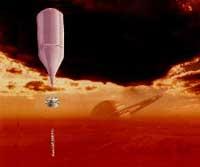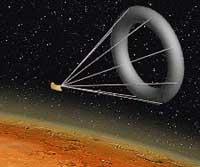New planetary explorers
In order to find effective and at the same time cheap methods for the exploration of planets, NASA researchers have developed different types of balloons, both based on hot-air balloons of centuries ago and conventional helium balls.

For NASA, the balloons are very interesting spacecraft to investigate a short distance from the surface of the planets, since at a certain altitude they can release tools, take aerial photos and perform other measures. In addition, they would be faster than vehicles that circulate on the surface of the planet and can study more surface.
The sun-heated balloons would lower more slowly than heavy parachutes and release measuring instruments along the way. For its elaboration have been based on the ball of the Montgolfiere brothers. Another type of ball uses ammonia, as the ammonia evaporates with the heat of the sun and inflates the ball. Helium balls can also be used and in some cases they can be very appropriate. In fact, in front of the balloons heated with the sun, their flight is much more intense, since the first ones carry out flights of a single day, while those of helium can spend a few weeks in the air. On the other hand, helium bottles are heavier and more complex as they have to transport compressed gas bottles.

Although all these types of balloons are useful for the investigation of the surface of the planets, the tests have been carried out in the upper layers of the Earth's atmosphere, that is, in conditions similar to those of the cold and light atmosphere of Mars. However, Venus, the moon of Titan Saturn and Jupiter, Saturn, Uranus and Neptune, farther away, are making balloons that can be apt to investigate, both for making flights in the area and for gently resting on the surface of the planets.
In addition, other inflatable pneumatic devices are being manufactured at NASA. Its intention is to use it to reduce the speed of spacecraft by entering orbit.
More information on the Internet:
Buletina
Bidali zure helbide elektronikoa eta jaso asteroko buletina zure sarrera-ontzian











